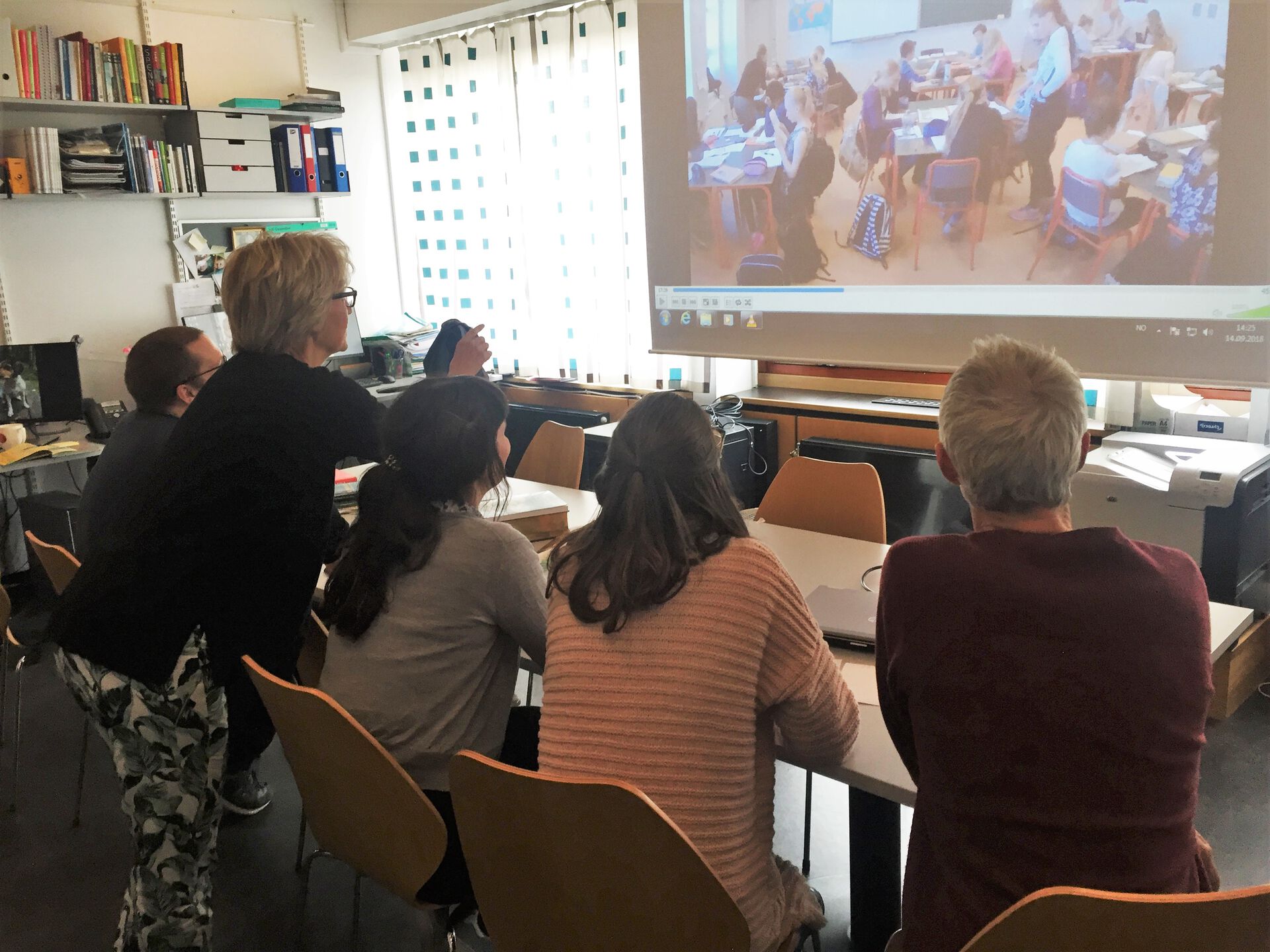The presentation was held at the Nordic conference for L1 didactic research in Uppsala on the 24th and 25th of November.
Close collaboration between researchers and practitioners
The two projects presented were LISA Plot and VIST. In both projects, researchers and teachers have used authentic video clips from school lesions and applied an observation system that measures teaching quality. This observation system is used to reflect upon teaching practices observed in the video footage, together with the teachers themselves.
An important ambition of the QUINT centre is to collaborate closely with practitioners, so findings from both studies were presented jointly with the researchers and the teachers. Professor Michael Tengberg, from Karlstad University the LISA Plot project, opened by discussing the importance of presenting jointly.
"It would not make sense in such a collaborative project to present the findings without the teachers present and actively contributing. The most interesting part of our presentation is of course the teachers own perspectives on how video-based professional development has impacted their practice."
Michael Tengberg was joined by Marie Wejrum, also from Karlstad University and the LISA Plot project. Post doc Camilla Gudmundsdatter Magnusson and Professor Marte Blikstad-Balas from the University of Oslo shared new findings from the VIST project, and four teachers from Eda municipality in Sweden; Malin Granström, Ulrika Guldbrandsson, Emelie Forsman, and Elin Berggren, contributed with teacher perspectives on LISA Plot.
Video as a tool for reflection on own practices
One of the QUINT Centre’s research themes relates to how authentic classroom videos can be used to improve teaching practices. Video data can provide teachers with a new experience: the possibility to actually see their own teaching as it happened. Researcher and Deputy Director of the QUINT Centre Marte Blikstad-Balas, emphasises how valuable this experience can be for teachers.
"It is impossible to systematically reflect upon your own teaching actions as you are busy performing them! Video data allows us repeated access to the teaching situation after it is over. This is a unique and very powerful starting point for collaborative professional development."

Both researchers and teachers echoed this sentiment in their presentation. Post doc Camilla Magnusson referred to a survey with teachers in the VIST project.
"Our survey with teachers actually shows that for many, seeing yourself and your colleagues teach was the most valuable part of the professional development. A hundred percent of the L1 teachers who took part in VIST, agree or strongly agree that the use of video clips has contributed to a better understanding of what they accomplished and did not accomplish in their teaching."
A shared language for teaching quality
Both the VIST and LISA Plot projects used the observation manual PLATO (Protocol for Language Arts Teaching Observations) as a way to operationalize what high quality teaching looks like when it comes to specific aspects of teaching, for example feedback. This was also seen as very valuable and one of the teachers, Elin Berggren, shared how the observation manual has impacted their teaching.
"We actually draw on PLATO not only when seeing a specific clip, but also when we plan our next lessons. It has given nuance to the way we see aspects of our practice. For example, it became very clear to us that even though we as teachers always know what we are doing and why, it may not always be clear enough for the students. We have improved the way we provide tasks, so that it is always clear what, why and how students should do a specific task."
The teachers explained how this understanding also permeates the planning of the lessons, and how it has become important for them to use the beginning and the end of each lesson to connect the dots and make the purpose of what is going on explicit to students.
Links
QUINT theme 3: Using videos to support teachers’ professional learning
